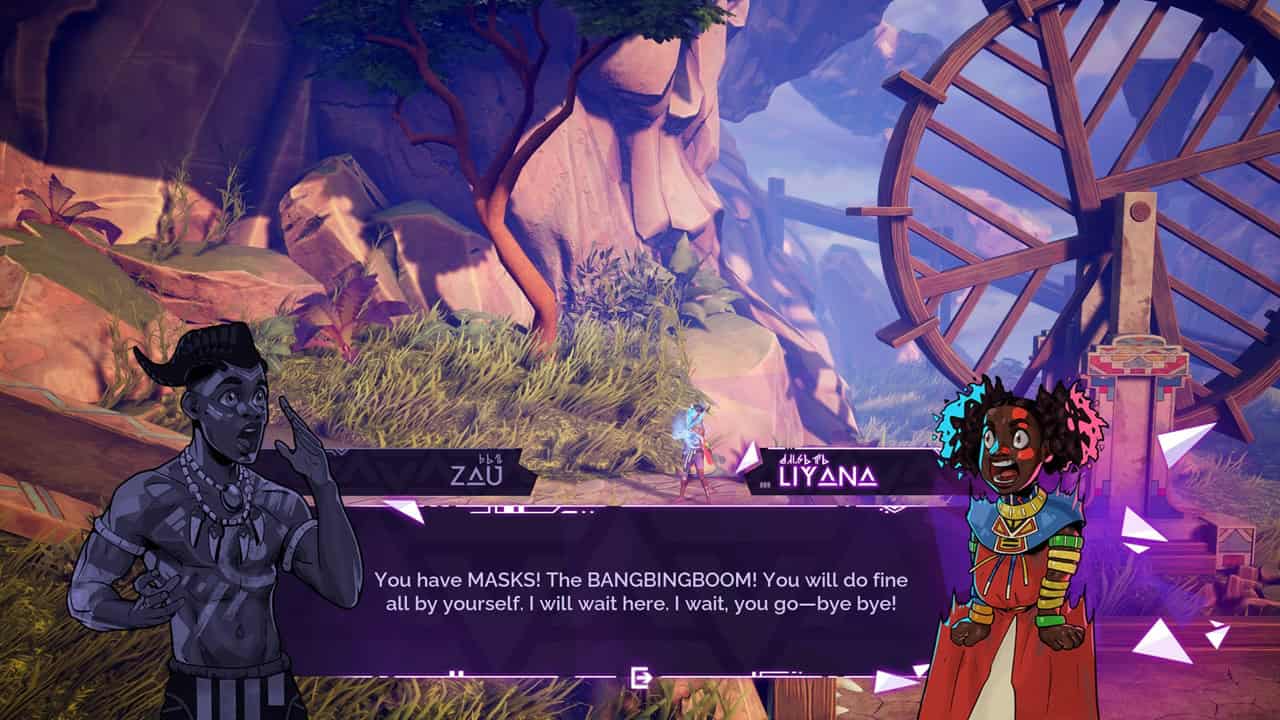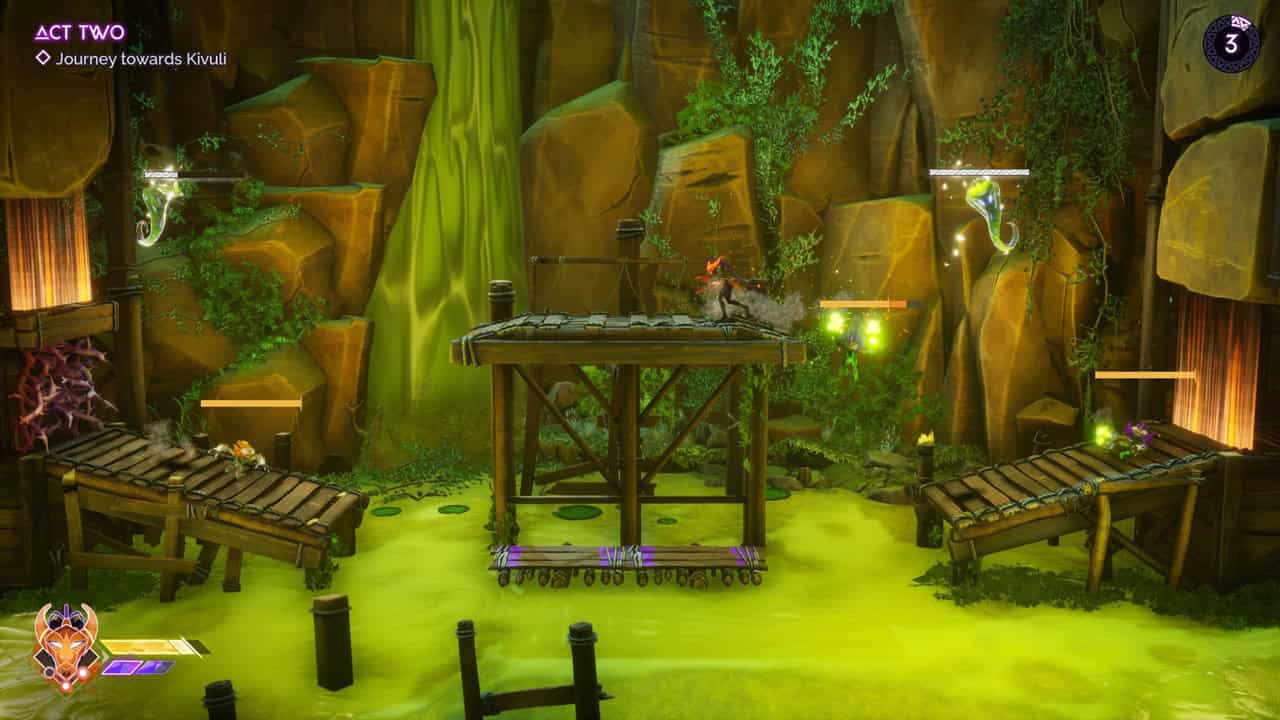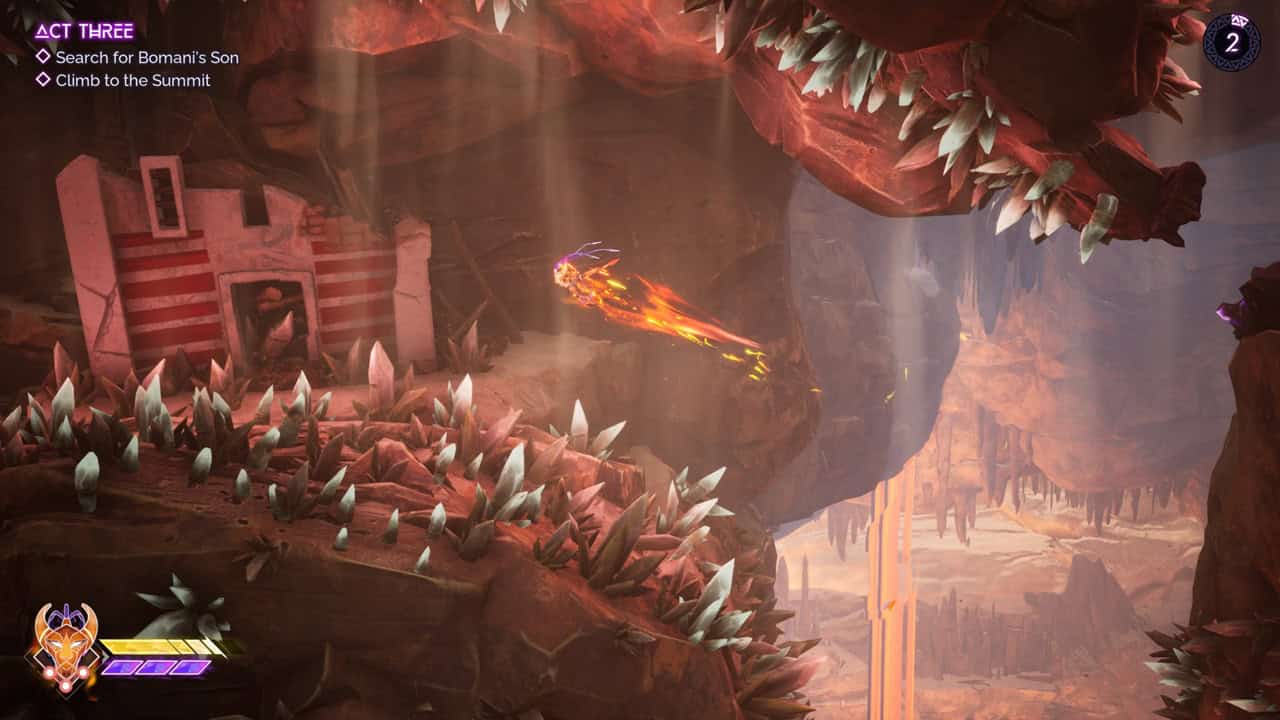Video Gamer is reader-supported. When you buy through links on our site, we may earn an affiliate commission. Prices subject to change. Learn more
In the game’s second act, a dying friend in Tales of Kenzera: Zau has your warrior shaman Zau exploring the Wildwood in search of life-saving herbs. Designed to make you feel lost, I grew frustrated with the biome’s dead ends and locked paths. By trying to push through the grief of losing his father, Zau’s reckless gesture of goodwill quickly punches me in the gut. It turns out the whole quest is a futile exercise, orchestrated by an enemy who wishes to devour your fear.
Surgent Studios’ debut title is filled with moments of self-discovery and reflection like these. It’s a project that’s deeply personal to founder Abubakar Salim, who previously voiced Bayek in Assassin’s Creed Origins. While it might not be as expansive as other Metroidvania titles, Tales of Kenzera: Zau’s challenges and triumphs come together to weave a remarkable story of acceptance.

The story focuses on the parallel stories of Zuberi and fictional Zau, where the latter exists in a book left by Zuberi’s father after his sudden death. Zau of Amandla strikes a deal with Kalunga, the god of Death, to bring his father back. In return, he must cross treacherous paths and confront three great spirits, each with their reasons for denying death. It contradicts Zau’s reward of reviving his father since Kalunga is supposed to keep people dead. Rest assured that the game’s final act neatly ties these threads up. Each path introduces you to characters in various stages of grief, grounding the mythical tale in familiar emotions. The dialogue is solid, complete with authentic voices and sharp writing. Kalunga changes from mentor to friend as he learns of the toll death takes on the living.
Tales of Kenzera: Zau’s vibrant world, scenic vistas, and warring spirits are shaped both by Bantu myths and the weight of Zau’s emotions. In African culture, death merits both mourning and celebration. Composer Nainita Desai does an incredible job with the game’s stirring soundtrack, mixing African beats with a Swahili choir (from Marvel’s Black Panther) to elevate the game’s best traversal and combat encounters. The music hops between intrigue and peril across Tales of Kenzera: Zau’s many biomes.
While Zau is pretty mobile right from minute one with dashes and double jumps, paths across the Woodlands’ swamps and the Deadlands’ lava are cleverly obstructed by props requiring new abilities. This Metroidvania idea shines in the Wildwood segment, where locked paths made me feel like I was running in circles on a hopeless quest. Once I unlocked a new magnetic hook at a shrine, I was ready to explore roads that were once dead ends. Completionists can return to old areas to find trinkets, health-boosting baobab trees, and ancient echoes, augmenting their playthrough with additional dialogue and context. You can also use fast travel to zip between explored areas.

Grief bleeds through Zau’s thoughts and deeds, leading to harsh retorts and a protagonist too stubborn to change at first. But as the game progressed, so too did Zau’s understanding of the pain he carried with him. While he does lash out at friends, his rage is best felt in combat. Zau’s fighting styles can be swapped via the masks of the Sun and Moon, letting you hop between melee and ranged playstyles. They also offer a fiery spear and freezing stone, letting you build satisfying combos. Both combat and traversal encourage you to switch between masks, representing the whirlwind of emotions inside Zau. An upgrade tree lets you develop these skills with experience earned from combat and exploration. You’ll need them if you want to survive Kenzera’s optional challenges and late-game threats.
Grief bleeds through Zau’s thoughts and deeds.
While the game is on the easier end of the difficulty scale, some of its timed platforming segments can pose a fair challenge. Tales of Kenzera: Zau’s boss fights against great spirits are a delightful mix of platforming and combat, each with a unique flavor supported by the plot. While sky spirit Impundulu’s morbid aspects have been trimmed, the game’s Hades-like reimaginations of deities maintain Kenzera’s focus on the human spirit.
As for regular combat encounters, basic skirmishes and extended battles will have you restoring your health every few seconds. Save your energy instead to pull off ultimate moves like an icy laser beam or a fire tornado. My favorite obstacles were the coloured shields that deplete faster with the right attacks, rewarding thoughtful combos over button mashing.

In Tales of Kenzera: Zau, grief and acceptance tug at your heart between bouts of refined combat and slick traversal. While seasoned Metroidvania fans will want more diversions and mystique, the game’s platforming abilities and challenges do justice to its setting. The transformative power of loss shines through in this examination of grief in a medium where death is merely an inconvenience. At a reasonable $20, this 9-10 hour adventure is well worth a dip into Bantu folklore.
Reviewed on PC. Game provided by the publisher.

